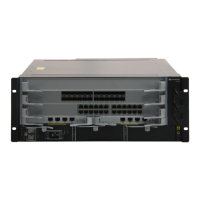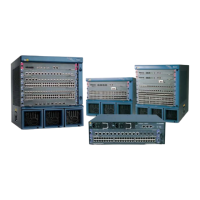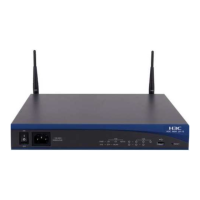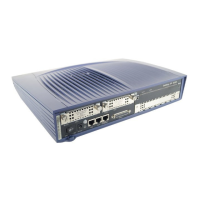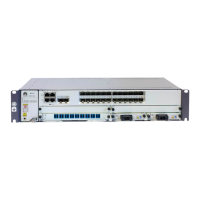The VLAN ID ranges from 1 to 4094. If VLANs need to be created in batches, run the vlan
batch { vlan-id1 [ to vlan-id2 ] } &<1-10> command to create VLANs in batches, and then run
the vlan vlan-id command to enter the view of a specified VLAN.
Step 3 Run:
mac-vlan mac-address mac-address [ priority priority ]
Map a MAC address to the VLAN.
l The mac-address value is in the H-H-H format. H is a hexadecimal number that contains one
to four digits, such as 00e0 and fc01. If an H contains less than four digits, 0s are padded
ahead. For example, if you specify an H as e0, it is displayed as 00e0. A MAC address cannot
be set to all 0s or all Fs.
l The optional parameter priority specifies the 802.1p priority value related to the MAC
addresses. The value ranges from 0 to 7. The greater the value, the higher the priority. The
default value is 0. After the 802.1p priority value is specified, frames with high priorities are
first forwarded when traffic is congested.
Step 4 Run:
quit
The system view is displayed.
Step 5 Configure the port type and features.
1. Run the interface interface-type interface-number command to enter the view of the port
to be configured to allow frames with a specified VLAN ID to pass through.
2. Run the port link-type hybrid command to set the port type to hybrid.
By default, the port type is hybrid.
3. Run the port hybrid untagged vlan { { vlan-id1 [ to vlan-id2 ] } &<1-10> | all } command
to configure the hybrid port to allow frames with a specified VLAN ID to pass through.
Step 6 (Optional) Run the vlan precedence mac-vlan command to configure a higher priority for MAC
address-based VLAN division.
By default, MAC address-based VLAN division is set as the preference.
Step 7 Run:
mac-vlan enable
MAC address-based VLAN division is enabled.
By default, MAC address-based VLAN division is disabled.
NOTE
MAC address-based VLAN assignment conflict with MUX VLAN and port vlan-stacking untagged.
They cannot be configured on the same interface.
----End
3.3.4 Dividing a LAN into VLANs Based on IP Subnets
IP subnet-based and protocol-based VLAN division are called network layer-based VLAN
division, which reduces manual VLAN configuration workload and allows users to easily join
a VLAN, transfer from one VLAN to another, and exit from a VLAN. IP subnet-based VLAN
division is applicable to networks that have traveling users and require simple management.
Quidway S7700 Smart Routing Switch
Configuration Guide - Ethernet 3 VLAN Configuration
Issue 01 (2011-07-15) Huawei Proprietary and Confidential
Copyright © Huawei Technologies Co., Ltd.
81

